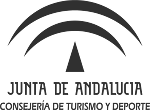Monitoring the Health Academy program from 2015 to 2017
Abstract
To analyze the implementation of the Health Academy Program over three years (2015 to 2017). The data is taken from the annual monitoring of the application of poles of the Health Academy Program in Brazil through questionnaires answered by the state, cities and poles management. The variables investigated were number of poles per region, active professionals, developed actions and target audience attendance. We performed a descriptive analysis of absolute and relative frequency and inferential analysis to the differences in proportions among the years. Monitoring response rate increased, especially in the northeast region; more than 88% of the poles maintained a higher proportion of physical education professionals; significant increase in actions of corporal practices and physical activity (2015 vs 2016) and reduction in actions on food (2015 vs 2016), complementary integrative practices (2015 vs 2016) and care for the elderly (2015 vs 2017).There has been a disparity in the regions that adopted the program over the years and the monitoring may contribute to health promotion strategy.














